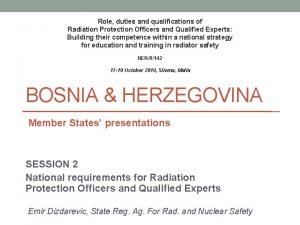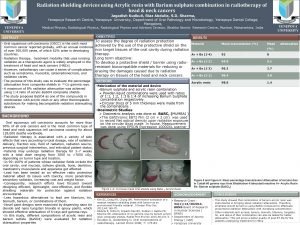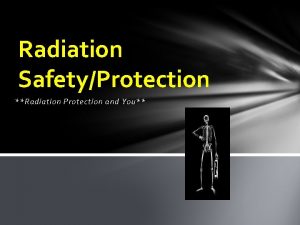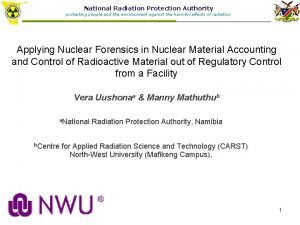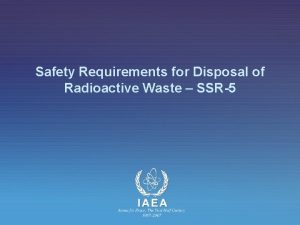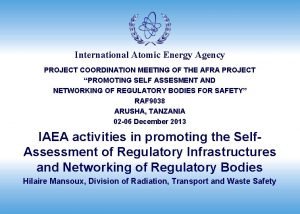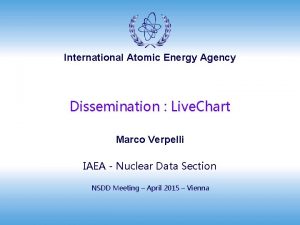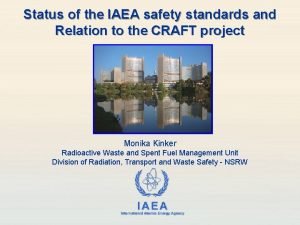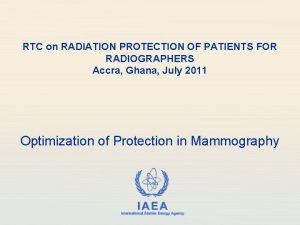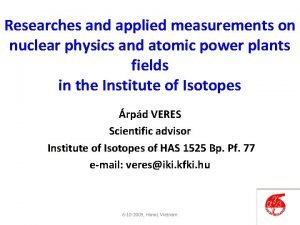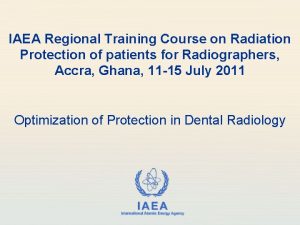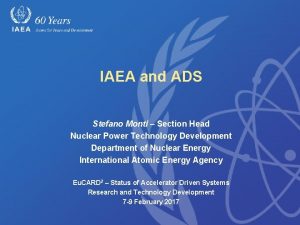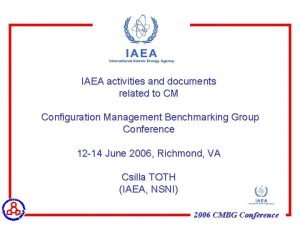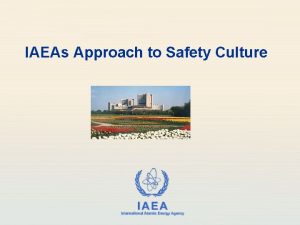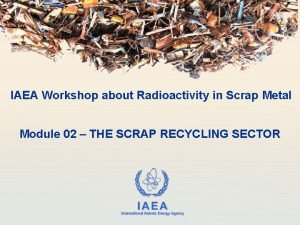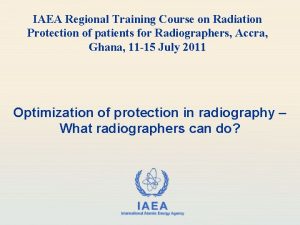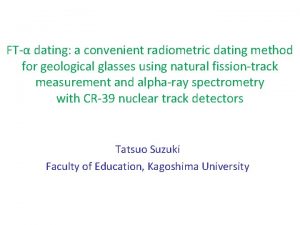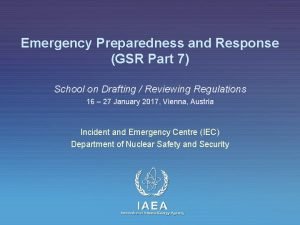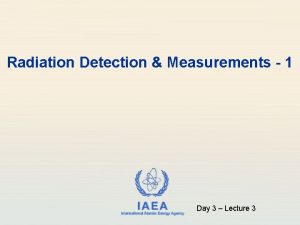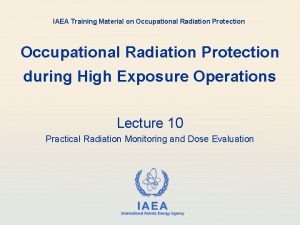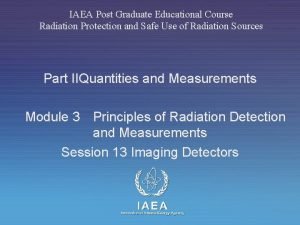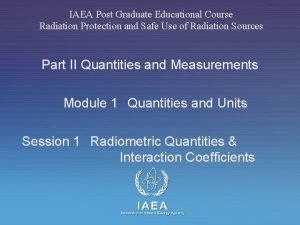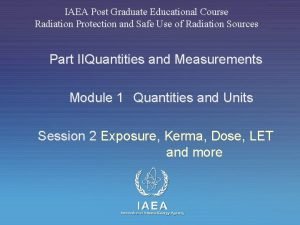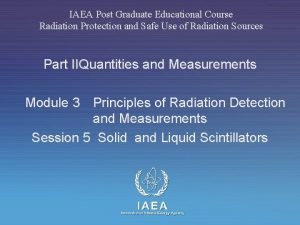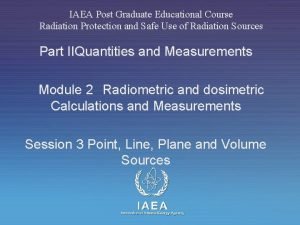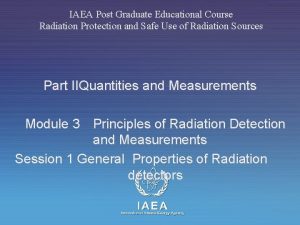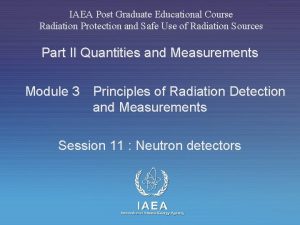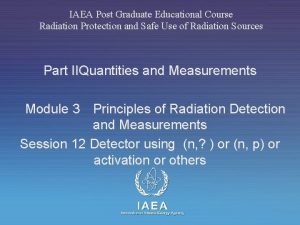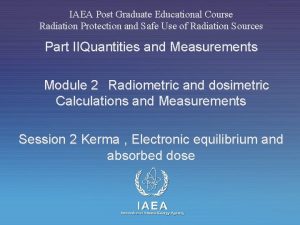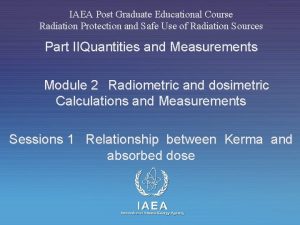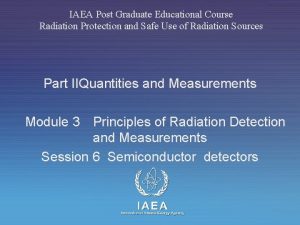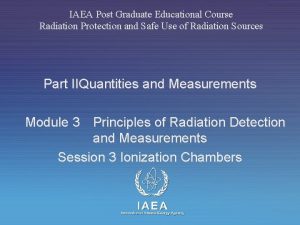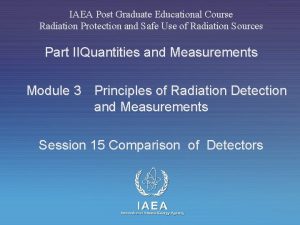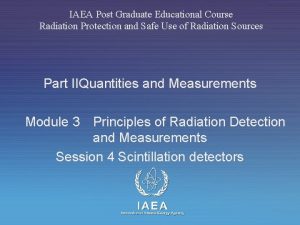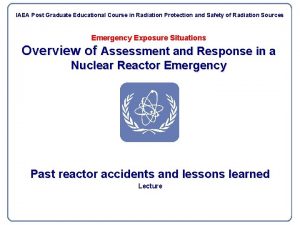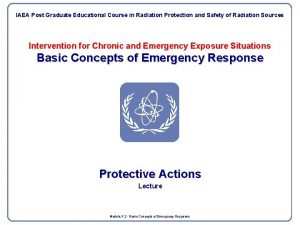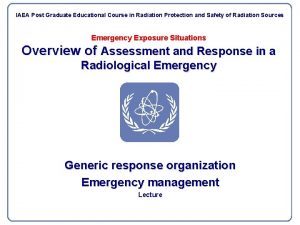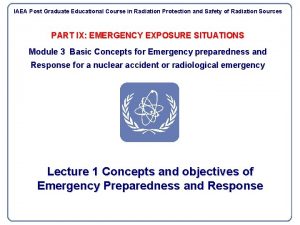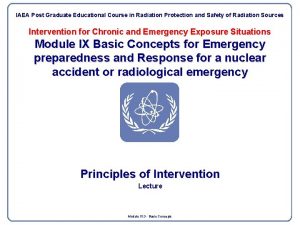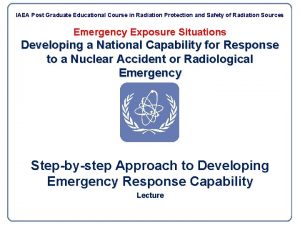IAEA Post Graduate Educational Course Radiation Protection and





















- Slides: 21

IAEA Post Graduate Educational Course Radiation Protection and Safe Use of Radiation Sources Part IIQuantities and Measurements Module 3 Principles of Radiation Detection and Measurements Session 14 Other Detectors IAEA International Atomic Energy Agency

Overview • Various kinds of radiation detectors will be discussed and their principles of operation explained • Students will learn about Electrets; selfpowered detectors; thermally stimulated exoelectron emission (TSEE); and radiophotoluminescent detectors (RPLD) IAEA 2

Content • Electrets • Self-powered detectors • Thermally stimulated exoelectron emission (TSEE) • Radiophotoluminescent detectors (RPLD) IAEA 3

Electrets ü Semi-permanently electrically charged material ü Usually a type of plastic insulator ü Requires a special reader and the use of calibration factors specific to each type ü Electrets most often used for measurement of radon, both short- and long-term, and surface alpha detection IAEA 4

Radon Electret IAEA 5

E-PERM Alpha Surface Monitor (Electret) IAEA 6

Electret Voltage Reader IAEA 7

E-PERM Electret Voltage Reader IAEA 8

Two Sizes of Electrets IAEA 9

Electret Microprocessor IAEA 10

Self-Powered Radiation Detectors • Two examples will be given: • Self-powered neutron detectors used in nuclear power stations • Self-powered Geiger counters IAEA 11

Self-Powered Neutron Detectors IAEA 12

Self-Powered Geiger Counters IAEA 13

Self-Powered Geiger Counters IAEA 14

Test Source for Self-Powered Geiger Counters IAEA 15

Thermally Stimulated Exoelectron Emission (TSEE) • Refers to heating of a material after it has been exposed to radiation • Irradiation leaves the material in an excited state (i. e. a state of disequilibrium) • Heating the material stimulates electron emission, which produces a current which can be measured and related to the dose IAEA 16

Thermally Stimulated Exoelectron Emission (TSEE) • A French-German cooperative project developed a TSEE counting system for exoelectron research • System uses Be. O thin film detectors, a heater and a geiger counter to measure the electrons released • Dose range is from 10 -3 c. Gy to above 10 c. Gy IAEA 17

Thermally Stimulated Exoelectron Emission (TSEE) • Thin aluminum layers have been used for TSEE detection of alpha and beta particles • Method can be applied to monitoring of alpha emitters, contamination control of tritium, and to skin dosimetry of high LET radiations IAEA 18

Thermally Stimulated Exoelectron Emission (TSEE) • TSEE has been applied to personal beta dosimetry • Dosimeters have been developed using TSEE from Li. F • Sensitivity of this method ranges as low as 30 Gy IAEA 19

Radiophotoluminescence (RPLD) • Radiophotoluminescence is the property of certain glasses (e. g. silver-activated phosphate glass) to store the energy from radiation until the glass is exposed to ultraviolet light, at which time the energy is released in the form of orange light. • A fluorimeter is used to measure the light output. IAEA 20

Summary • Various kinds of radiation detectors were discussed and their principles of operation explained • Students learned about Electrets; selfpowered detectors; thermally stimulated exoelectron emission (TSEE); and radiophotoluminescent detectors (RPLD) IAEA 21
 Radiation protection officer qualifications
Radiation protection officer qualifications Barium sulphate board for radiation protection
Barium sulphate board for radiation protection Cardinal principles of radiation protection
Cardinal principles of radiation protection National radiation protection authority namibia
National radiation protection authority namibia Ssr-5
Ssr-5 Saris iaea
Saris iaea Livechart iaea
Livechart iaea Intouch plus iaea
Intouch plus iaea Part5ds
Part5ds Rtc protective film
Rtc protective film Iaea
Iaea Iaea
Iaea Stefano monti iaea
Stefano monti iaea Iaea
Iaea Iaea
Iaea Steel scrap
Steel scrap Iaea
Iaea Iaea
Iaea Gsr part7
Gsr part7 Iaea pcmf
Iaea pcmf Film badge
Film badge Iaea
Iaea
